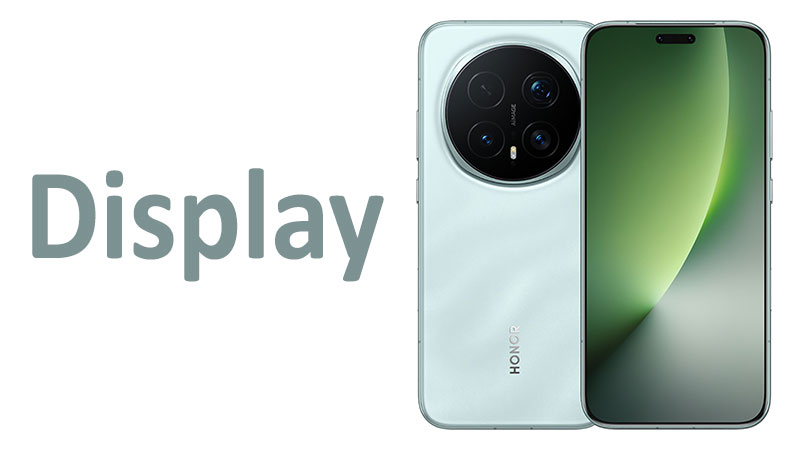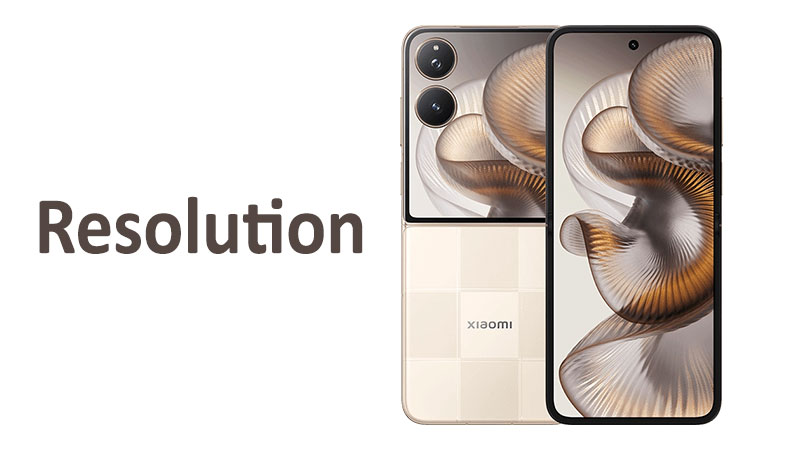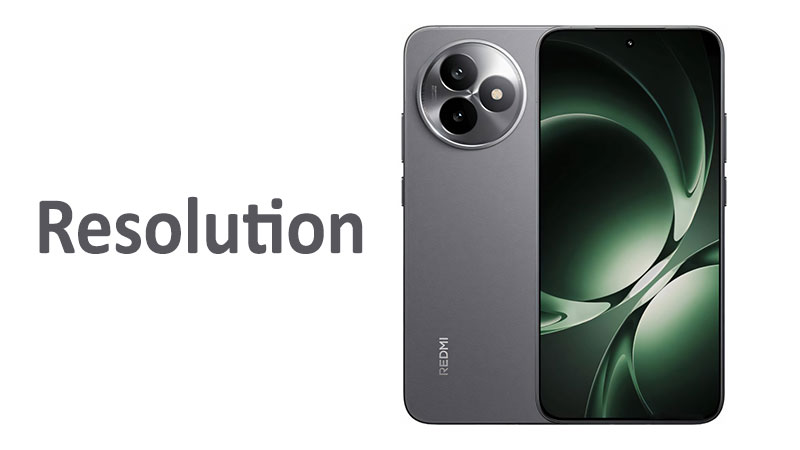The Honor Magic 8 Display is truly a flagship component. It represents a significant leap in mobile screen technology. Choosing a smartphone involves many factors. However, the display quality remains paramount for most users. This component dictates how you consume media. It also affects how you interact with your phone every single day. Honor designed the Magic 8 screen for both elite visual performance and superior eye comfort. This detailed review explores every specification and feature. We will help you understand exactly what this premium panel offers.
The Foundation: LTPO OLED Technology
The screen technology is the starting point for quality. The Honor Magic 8 features an advanced LTPO OLED panel. LTPO stands for Low-Temperature Polycrystalline Oxide. This sophisticated backplane technology allows for dynamic refresh rate switching. It delivers exceptional power efficiency. Standard OLED panels are less flexible in their power draw. The LTPO design is the core reason for the phone’s smooth and efficient operation.
LTPO Explained and Compared
LTPO differs greatly from traditional LTPS OLED technology. LTPS, or Low-Temperature Polysilicon, is commonly used in older or less expensive OLED screens. LTPS struggles to adjust the refresh rate dynamically. It typically forces the screen to run at a fixed, high rate or switch between only a few options.
In contrast, the Magic 8’s LTPO panel can scale its refresh rate smoothly. It moves all the way from 1Hz up to 120Hz. For instance, the screen uses only 1Hz when viewing a static image. It instantly jumps to 120Hz when you scroll through an app. This adaptive behavior is crucial. It maximizes battery life without sacrificing smooth performance. Competitors like older iPhones and many non-flagship Androids use less efficient LTPS or hybrid panels. The seamless LTPO integration puts the Honor Magic 8 display at the forefront of power efficiency.
1 Billion Colors and Cinematic Depth
The Honor Magic 8 display supports 1 billion colors. This is a crucial metric for visual fidelity. Supporting a billion colors means the panel can render a vast spectrum of hues. It provides incredibly accurate and vibrant images.
This color depth translates to smoother gradients. It eliminates the visible banding that occurs on 8-bit displays. Watching high-quality video content becomes a richer, more immersive experience. For photographers and visual artists, this wide color gamut ensures their work appears exactly as intended. This level of color precision aligns the Magic 8 with the very best cinematic-grade displays available on the market.
High-Performance Metrics: Size, Resolution, and Clarity
A great display must provide sharp images and an expansive viewing area. The Honor Magic 8 excels in both these areas. It features carefully chosen dimensions and resolution for balanced viewing.
Optimal Screen Size and Body Ratio
The display measures 6.58 inches diagonally. This size strikes an excellent balance. It offers ample screen real estate for media consumption. Yet, the phone remains manageable for single-handed use. The screen-to-body ratio is highly impressive. It measures approximately 90.6%. This means the bezels around the display are extremely thin. The entire front face is almost entirely screen.
A high screen-to-body ratio enhances the viewing experience significantly. It minimizes distraction from the phone’s chassis. Compared to devices with thicker bezels, the Magic 8 feels more futuristic. It offers a more immersive window into your content.
Achieving Superior Clarity: The Pixel Density
The Honor Magic 8 display boasts a resolution of 1256 x 2760 pixels. This is often referred to as a 1.5K resolution. This resolution choice is smarter than standard Full HD+. It is also more power-efficient than a full 4K or 2K display.
This resolution on a 6.58-inch panel results in a pixel density of approximately 461 pixels per inch (ppi). A density above 400 ppi is considered excellent. At 461 ppi, the individual pixels are virtually invisible to the naked eye. Text appears incredibly crisp and sharp. Detailed images maintain their fine nuances. The slightly higher-than-FHD+ resolution provides a noticeable clarity boost. It accomplishes this without draining the battery life excessively like ultra-high-resolution screens sometimes do. Honor found a perfect middle ground for flagship clarity and daily usability.
The Smoothness Factor: Dynamic 120Hz Refresh Rate
The refresh rate determines how many times the screen updates the image per second. The Honor Magic 8 display supports a blistering 120Hz refresh rate. This is double the speed of traditional 60Hz displays. The resulting experience is one of ultra-smooth motion.
Scrolling through long web pages feels instantaneous. Animations appear fluid and highly responsive. High-frame-rate mobile games benefit immensely from this capability. They deliver a competitive edge and a much more enjoyable experience.
Adaptive Refresh Rate Benefits
The 120Hz functionality is dynamic, thanks to the LTPO technology. The screen intelligently adjusts its rate between 1Hz and 120Hz. This capability provides a key advantage over non-LTPO 120Hz screens. Those fixed-rate displays constantly draw maximum power.
The Magic 8’s adaptive switching ensures high refresh rates are used only when needed. This preserves battery life significantly during static tasks like reading e-books or viewing photos. The combination of 120Hz speed and LTPO intelligence makes this display efficient and performance-driven. It is a highly optimized system.
Unprecedented Brightness: Conquering the Sun
Brightness is one of the most critical factors for outdoor visibility and HDR impact. The Honor Magic 8 display sets a new benchmark in this category. It offers two distinct levels of high brightness.
High Brightness Mode (HBM) for Daily Use
The phone can reach 1800 nits in High Brightness Mode, or HBM. This level of brightness is sustained across a larger portion of the screen. HBM is primarily activated outdoors under direct sunlight. This ensures the screen remains perfectly readable even in harsh lighting conditions.
Many competing flagship phones offer excellent HBM levels. However, 1800 nits places the Honor Magic 8 among the industry leaders. It guarantees exceptional legibility for navigation and daily tasks when outdoors. This feature eliminates the common frustration of a washed-out screen on a sunny day.
The Peak Brightness Ceiling: 6000 Nits
The most astonishing specification is the 6000 nits peak brightness. This peak brightness is typically reserved for small, localized areas of the screen. It only activates when displaying specific HDR content.
This massive brightness reserve dramatically enhances the viewing of HDR videos. It makes the brightest highlights in a scene truly pop. The contrast between dark and bright areas becomes breathtaking. This level of peak brightness is currently unmatched by most mainstream competitors. It solidifies the Honor Magic 8’s position as a premier device for mobile HDR content consumption. Few other phones can achieve this level of luminance, offering a truly dazzling visual experience.
Eye Comfort Innovation: 4320Hz PWM Dimming
Eye health and comfort are increasingly important for heavy smartphone users. Honor addresses this concern with an industry-leading feature. The Magic 8 employs ultra-high-frequency Pulse Width Modulation (PWM) dimming. This technology operates at an exceptional 4320Hz.
Understanding PWM Dimming
PWM dimming is the method most OLED screens use to control brightness. The screen rapidly flicks on and off to create the illusion of lower brightness. If this flickering frequency is too low (e.g., 240Hz or 480Hz), sensitive users can perceive it. This can lead to eye strain, headaches, and general discomfort. Low-frequency PWM is a common complaint among OLED users.
The 4320Hz Difference
The 4320Hz rate on the Magic 8 is one of the highest in the mobile industry. This frequency is far beyond the threshold of human perception. It effectively eliminates the negative effects of screen flicker. The display appears stable and comfortable even at very low brightness settings. This high-frequency solution acts as a key eye protection feature.
Comparing this to many competing flagships reveals a major advantage for Honor. Many other leading phones still use much lower frequencies. The 4320Hz PWM dimming makes the Honor Magic 8 a top choice for users with PWM sensitivity. It ensures maximum viewing comfort during late-night use or extended reading sessions. This commitment to eye care is a significant selling point for the device.
Cinematic Quality: Dolby Vision and HDR Vivid
Beyond brightness and refresh rate, the display supports multiple high dynamic range (HDR) standards. These certifications ensure you see content exactly as the creators intended. The Honor Magic 8 supports both Dolby Vision and HDR Vivid formats.
The Power of Dolby Vision
Dolby Vision is a widely recognized and premium HDR standard. It uses dynamic metadata to optimize picture quality scene-by-scene. This results in superior contrast, brightness, and color compared to standard HDR10. Streaming services like Netflix, Disney+, and Apple TV+ offer extensive Dolby Vision content. The Magic 8 can fully leverage this cinematic library.
Introducing HDR Vivid
HDR Vivid is a specific HDR standard developed for the Chinese market. It represents a domestic effort to enhance video quality. HDR Vivid also utilizes dynamic metadata similar to Dolby Vision. Supporting both standards ensures the user enjoys the best possible content quality regardless of the source. This dual support provides excellent versatility for global users.
The support for these advanced HDR formats, combined with the 6000 nits peak brightness, delivers an unrivaled visual experience. Colors burst with life. Shadows reveal subtle details. The overall image depth is truly impressive.
Unbreakable Confidence: Giant Rhino Glass Protection
A powerful display requires robust protection. Honor shields the Magic 8 display with Giant Rhino Glass. This proprietary glass is specifically engineered for superior impact and scratch resistance. It gives users peace of mind in daily use.
Durability Versus Competition
While specifics on the chemical composition are proprietary, the “Giant Rhino” branding suggests a focus on extreme toughness. It is designed to compete directly with leading protection solutions like Corning’s Gorilla Glass Victus or Shield Glass. The goal is to provide exceptional resistance against drops and daily micro-scratches.
The inclusion of this high-end protection is essential for a modern flagship. It minimizes the risk of screen damage, which is typically the most expensive component to repair. The durability provided by Giant Rhino Glass is a critical factor for long-term ownership. It ensures the pristine display quality lasts over the lifespan of the phone.
Specialized Comparisons
The Honor Magic 8 display excels when compared to its key competitors. Its specifications showcase Honor’s aggressive approach to display technology.
Versus Previous Generation (Honor Magic 7)
The jump from the previous Magic 7 to the Magic 8 is substantial, particularly in brightness. The Magic 8’s 6000 nits peak brightness is a massive upgrade. It offers better HDR performance than the previous generation. Furthermore, the 4320Hz PWM dimming is a notable refinement. This is a considerable improvement over the lower frequencies found in earlier models. Overall, the Magic 8 provides a much more comfortable and dazzling visual experience.
Versus Competitors (Samsung and Apple)
Apple and Samsung flagships also offer fantastic displays. They typically feature strong HBM levels and 120Hz LTPO technology. However, the Honor Magic 8 sets itself apart in two critical areas. First is the industry-leading 6000 nits peak brightness. Second is the superior 4320Hz PWM dimming.
While Samsung and Apple panels are superb, they often use lower PWM frequencies. This makes the Magic 8 significantly more eye-friendly for sensitive users. The combination of high resolution, dynamic 120Hz, and extreme brightness makes the Magic 8 a serious contender for the title of “best smartphone display.”
Pros, Cons, and Buyer Advice
The Honor Magic 8 display offers a powerhouse of features. Potential buyers should consider both its strengths and its limitations.
Advantages of the Honor Magic 8 Display
The first major pro is the best-in-class eye comfort. The 4320Hz PWM dimming is a huge benefit for sensitive users. Second, the 6000 nits peak brightness delivers breathtaking HDR video. This makes streaming content incredibly vibrant. Third, the LTPO 120Hz panel perfectly balances smoothness and battery efficiency. This adaptive behavior is highly valuable. Fourth, the 1256 x 2760 resolution ensures images and text look flawlessly sharp. Finally, the Giant Rhino Glass provides a necessary layer of robust protection.
Potential Drawbacks to Consider
One minor drawback relates to the resolution. While excellent, it is technically not the highest resolution available. Some competing Pro models offer higher 1440p (2K) resolutions. However, the difference is negligible at this screen size. Another point is the physical screen size. At 6.58 inches, the phone is large. Users preferring smaller, more compact devices may find the size challenging. The aggressive use of curved edges might also cause some minor viewing distortion or accidental touches for some users.
Important Points for Buyers
Buyers should prioritize the Magic 8 if they consume a lot of HDR media. The 6000-nit capability is a feature you can see immediately. Furthermore, if you spend many hours reading or using your phone in dim light, the 4320Hz PWM is a game-changer. It dramatically reduces eye fatigue compared to lower-frequency screens.
The display is highly curved. It is advisable to handle the phone before buying it. This ensures you are comfortable with its feel in your hand. This display is not just about raw specs. It offers a tangible, noticeable improvement in daily comfort and viewing quality.
Conclusion
The Honor Magic 8 display is not merely an incremental upgrade. It represents a comprehensive and highly refined technical achievement. Honor engineered this LTPO OLED panel for the demanding user. It offers a near-perfect balance of key features.
The panel provides sharp 1256 x 2760 resolution and ultra-smooth 120Hz dynamics. Crucially, it stands out with its extreme 6000 nits peak brightness. The display also leads the industry in eye protection. The 4320Hz PWM dimming technology offers superior comfort during long usage sessions.
Supported by Dolby Vision and protected by Giant Rhino Glass, the Magic 8 display delivers a flagship experience. It is easily one of the best smartphone screens available today. This display makes a compelling argument for choosing the Honor Magic 8. It excels for media enthusiasts, mobile gamers, and eye-sensitive users alike. The phone sets a powerful new standard for visual excellence.
Frequently Asked Questions (FAQ)
1. What type of screen technology does the Honor Magic 8 use?
The Honor Magic 8 uses an advanced LTPO OLED panel. This technology allows for a dynamic refresh rate. This means the screen can save battery life effectively.
2. How bright is the Honor Magic 8 display?
The display achieves 1800 nits in High Brightness Mode outdoors. It can reach an impressive 6000 nits for localized peak brightness when viewing HDR content.
3. What is the benefit of 4320Hz PWM Dimming?
The 4320Hz PWM dimming significantly reduces screen flicker. This provides better eye comfort. It is highly beneficial for people sensitive to low-frequency flicker.
4. What is Giant Rhino Glass protection?
Giant Rhino Glass is Honor’s proprietary, high-end screen protection. It is engineered to offer superior resistance against drops and scratches. It competes with other leading protective glass brands.
5. Does the Honor Magic 8 display support HDR video?
Yes, the Honor Magic 8 display supports both Dolby Vision and HDR Vivid standards. This ensures an exceptional, cinematic viewing experience for supported streaming content.



